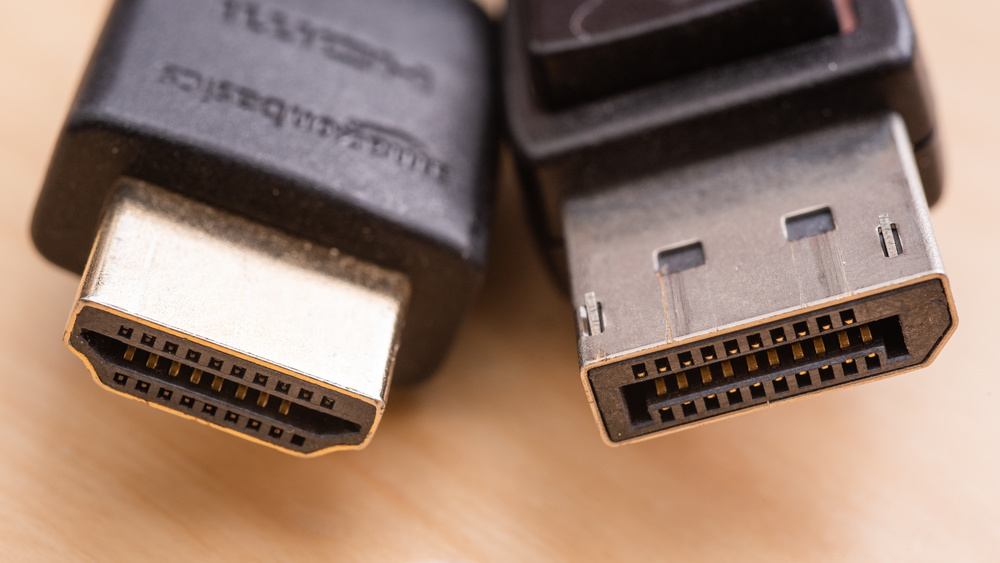Choosing Between DisplayPort and HDMI the Right Cable for You

When it comes to connecting your devices, whether it’s your computer monitor, television, or gaming console, selecting the right cable can make all the difference. Two of the most popular options on the market today are DisplayPort and HDMI. In this comprehensive guide, we’ll delve into the intricacies of both technologies to help you make an informed decision. Whether you’re a tech enthusiast, a casual user, or a professional, understanding the nuances of Choosing Between DisplayPort and HDMI: Finding the Right Cable for You is crucial in optimizing your viewing experience.
Understanding DisplayPort
Embarking on the journey of Choosing Between DisplayPort and HDMI: Finding the Right Cable for You requires a thorough understanding of each option. DisplayPort, often heralded as the pinnacle of display connectivity, boasts several advantages. One of its primary features is its ability to carry both video and audio signals, eliminating the need for separate cables. This streamlined approach not only reduces clutter but also ensures a seamless user experience. Additionally, DisplayPort cables support higher resolutions and refresh rates, making them ideal for gamers and professionals alike.
Exploring HDMI
On the flip side of the coin lies HDMI, a household name in the realm of multimedia connectivity. HDMI cables are renowned for their versatility and widespread compatibility. Whether you’re connecting a Blu-ray player, a gaming console, or a streaming device, chances are it’ll feature an HDMI port. Furthermore, HDMI supports various audio formats, including Dolby TrueHD and DTS-HD Master Audio, delivering immersive sound quality alongside stunning visuals. However, it’s essential to consider the specific requirements of your setup when Choosing Between DisplayPort and HDMI: Finding the Right Cable for You.
Comparing Key Features
Bandwidth and Resolution Support
In the quest for optimal display quality, bandwidth plays a pivotal role. DisplayPort cables typically offer higher bandwidth compared to HDMI, allowing for the transmission of 4K and even 8K resolutions at higher refresh rates. This makes DisplayPort the go-to choice for users who demand uncompromising visual fidelity.

Audio Capabilities
While both DisplayPort and HDMI support audio transmission, HDMI holds a slight edge in terms of audio formats. HDMI cables can transmit uncompressed audio signals, ensuring pristine sound quality across the board. However, for most users, the difference may be negligible, especially when considering the overall performance of modern audio systems.
Connector Types
When Choosing Between DisplayPort and HDMI: Finding the Right Cable for You, it’s essential to consider the physical connectors involved. DisplayPort cables feature a distinctive L-shaped connector, which can be beneficial in tight spaces or when routing cables behind furniture. On the other hand, HDMI cables come in various sizes, including standard, mini, and micro, catering to a wide range of devices and applications.
Cost and Availability
Another factor to weigh is the cost and availability of DisplayPort and HDMI cables. While HDMI cables are generally more ubiquitous and affordable, DisplayPort cables may offer better value for users seeking cutting-edge performance. Additionally, HDMI cables come in various quality grades, ranging from standard to high-speed premium cables, each with its price point and performance characteristics.
Compatibility
Compatibility is paramount when Choosing Between DisplayPort and HDMI: Finding the Right Cable for You. While HDMI enjoys widespread adoption across consumer electronics, DisplayPort is favored in professional settings and high-end gaming setups. It’s crucial to ensure that your devices support the chosen cable type to avoid compatibility issues down the line.
Future-Proofing
As technology continues to evolve at a rapid pace, future-proofing your setup is a wise investment. DisplayPort cables, with their higher bandwidth and support for emerging display standards, offer a level of future-proofing that HDMI may struggle to match. However, HDMI remains a viable choice for users who prioritize backward compatibility and ease of use.
Choosing Between DisplayPort and HDMI: Finding the Right Cable for You
When it comes down to Choosing Between DisplayPorts and HDMI: Finding the Right Cable for You, there’s no one-size-fits-all answer. Instead, it’s essential to consider your specific needs, preferences, and budget constraints. If you’re a professional content creator or an avid gamer seeking the utmost in performance and visual fidelity, DisplayPort may be the way to go. Conversely, if versatility, affordability, and widespread compatibility are your top priorities, HDMI could be the perfect choice.
FAQs
- Which is better: DisplayPort or HDMI? DisplayPort and HDMI each have their strengths and weaknesses, making it essential to consider your specific requirements before making a decision.
- Can I use DisplayPorts and HDMI interchangeably? While some devices may support both DisplayPort and HDMI, it’s crucial to check compatibility before attempting to interchange cables.
- Do all devices support 4K resolution? Not all devices support 4K resolution, so it’s essential to verify the capabilities of your display and source devices before investing in high-resolution cables.
- Are DisplayPorts cables more expensive than HDMI? DisplayPorts cables may be slightly more expensive than HDMI cables, but they often offer better performance and future-proofing capabilities.
- Can I connect my gaming console to a DisplayPort monitor? Most modern gaming consoles feature HDMI outputs, so you may need an HDMI-to-DisplayPort adapter to connect them to a DisplayPort monitor.
- What factors should I consider when choosing a cable? When Choosing Between DisplayPorts and HDMI: Finding the Right Cable for You, consider factors such as bandwidth, resolution support, audio capabilities, connector types, cost, compatibility, and future-proofing.
Conclusion
In conclusion, Choosing Between DisplayPort and HDMI: Finding the Right Cable for You requires careful consideration of various factors, including performance, compatibility, and budget. Whether you opt for the cutting-edge capabilities of DisplayPort or the widespread compatibility of HDMI, the key is to prioritize your specific needs and preferences. By weighing the pros and cons of each option, you can ensure a seamless and satisfying viewing experience tailored to your unique requirements.




Leave a Comment